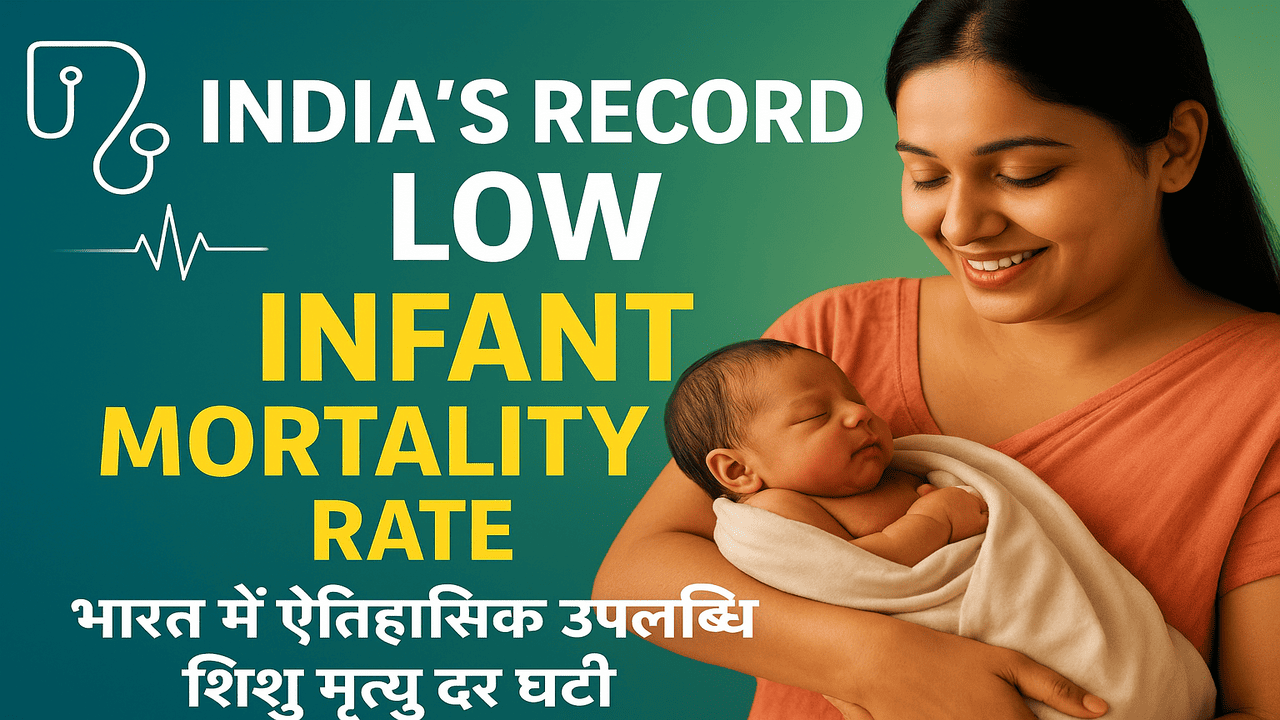Blog
India’s Infant Mortality Rate Falls to Record Low of 25 – A Historic Achievement in Child Health

India has recently achieved a historic milestone in public health. According to the Sample Registration System (SRS) 2023 report, the country’s Infant Mortality Rate (IMR) has fallen to 25 deaths per 1,000 live births, which is the lowest level ever recorded.
In fact, this achievement reflects decades of continuous improvement in maternal care, child health, and preventive medicine. Back in 1971, India’s IMR was alarmingly high at 129 per 1,000, yet today it has dropped by almost 80%. Therefore, this progress highlights both government initiatives and societal change.
Why This Achievement Matters
Infant Mortality Rate is considered one of the most crucial indicators of a nation’s healthcare quality and socio-economic growth. Moreover, a decline in IMR signifies that more children are surviving their most vulnerable first year of life.
Between 2013 and 2023, India managed to reduce its IMR from 40 to 25, which means nearly a 37.5% decline in just one decade. Consequently, this rapid progress has placed India among the faster-improving countries in child survival.
Regional Highlights
Across the states, performance varies. For instance, Manipur leads the nation with the lowest IMR of 3 per 1,000 live births. Similarly, Kerala follows closely with 5 per 1,000, making it the only major state to achieve single-digit figures.
On the other hand, states such as Madhya Pradesh, Uttar Pradesh, and Chhattisgarh continue to report higher numbers at around 37 per 1,000. Thus, while India as a whole is progressing, certain regions still require urgent attention.
Urban vs Rural Divide
The report also reveals clear differences between rural and urban India. In rural areas, IMR dropped from 44 to 28, whereas in urban settings, it decreased from 27 to 18.
Although rural India still lags behind, the narrowing gap demonstrates that government programs are making an impact. Furthermore, schemes like Janani Suraksha Yojana and Mission Indradhanush have expanded healthcare access even in remote regions.
Key Government Initiatives Driving Change
Several policies have directly influenced this decline. For example:
- Mission Indradhanush significantly improved immunization coverage.
- Janani Shishu Suraksha Karyakram (JSSK) ensured free deliveries and infant care.
- National Health Mission (NHM) strengthened both rural and urban health systems.
- Ayushman Bharat expanded affordable healthcare access nationwide.
Together, these programs ensured that millions of mothers and infants received timely medical services. Moreover, improved awareness and institutional deliveries further contributed to survival rates.
Global Comparison
India’s performance also looks impressive on a global scale. From 1990 to 2023:
- IMR dropped by 71%, whereas the global average fell by 58%.
- Neonatal Mortality decreased by 70%, compared with 54% globally.
- Under-five mortality fell by 78%, versus a 61% global average.
Thus, India is progressing faster than the world average, proving that focused health policies can make a long-term impact.
The Road Ahead
Nevertheless, challenges remain. Higher-IMR states must receive more investment in primary healthcare, nutrition, and neonatal intensive care. In addition, bridging the rural-urban divide will be essential for future success.
If India continues this momentum, it will be better positioned to achieve the Sustainable Development Goals (SDGs) related to child survival by 2030.
Conclusion
In conclusion, India’s record-low infant mortality rate is not just a number, but a symbol of progress and hope. It proves that sustained investment in healthcare, coupled with public awareness, can change lives. Ultimately, this achievement sets the foundation for a healthier and more secure future for India’s children.
